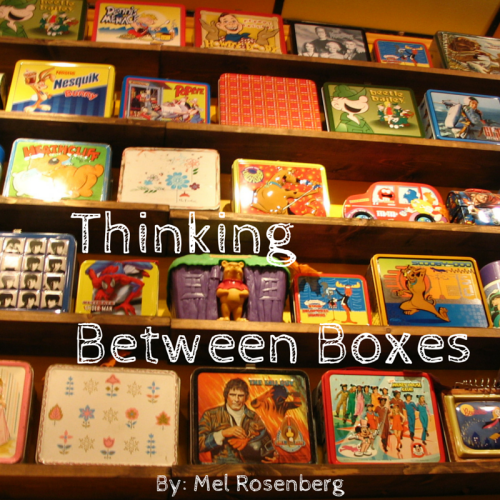
Creative thinking is a war between two boxes. Two frames of thought, two states of mind, two categories, two things, two words, two disciplines, two ideas that seem to have absolutely nothing to do with each other. Dichotomous. Incompatible. The creativity begins when you start to glue them together anyway. Sometimes the connection is an invention that can be patented. Often the connection is fun and hilarious.
Thinking between boxes is mainly about thinking between two frames of thought. For example, in the following slide you see “hya” and again “hya” from the previous sentence. Except that in one of them I’ve changed the frame of thought and taken the letters from a Russian word, “noozhna”, which is the name of a Russian princess. Or not. Everything depends on your frame of thought.

And here we see two white boxes. You’re high school students, so you are thinking that this is a blank piece of square people, either for writing the exam, or filling with information that you try and crumple up and hide somewhere, stick to the ceiling, etc. I sometimes think that schools promote creativity in students just by encouraging them to find ingenious ways to cheat on exams. And maybe there is a clever student who thinks that this is the same page, just two sides of it. But I assure you, it’s something else. I come from Canada and I have a different frame of reference. The white box on the right is simply the view out of the window in February.
Thinking between boxes is not just connecting between two frames of thought. It is also connecting between two states of mind, two disciplines, categories, actions, behaviors, cultures, pictures, words. And then finding the unexpected connection between them. And of course, the more unexpected the connection, the higher the level of creativity.
I should also add that you can mix and match, i.e., connect between a category and an action.
You can think between boxes for fun or for profit. Lucky for me, I have done both. One of my favorites is to take something and then add an activity, either shaking, turning it upside down. In my research career, I took water and oil, two immiscible liquids, when you shake them you create an emulsion of tiny oil droplets that can bind bacteria in the mouth. That was profitable. But I also used the same principle to teach Tim the Porcupine to get his quills back on right. And you’ll notice that he uses the right mouthwash (the lovely illustration is by Rotem Omri). When you look at them side by side, fun and profit are not that different after all.
Everyone these days refers to creative thinking as ‘thinking outside the box. If you search the term, you get about 1,040,000 results. That’s because people have been talking about it for decades (supposedly ever since the nine point quiz which you have beyond the point grid to solve).

But what is thinking outside the box? Beats me. I’m assuming that the box is a category, and you are encouraged to think outside it somewhere. But where? It’s a pretty big universe out there. Give me a hint. And even if it’s a big box, still a much bigger universe. Finally, if you do come up with a new idea, novel paradigm, while thinking outside the box, what you have done is come up with a new box to think outside of.
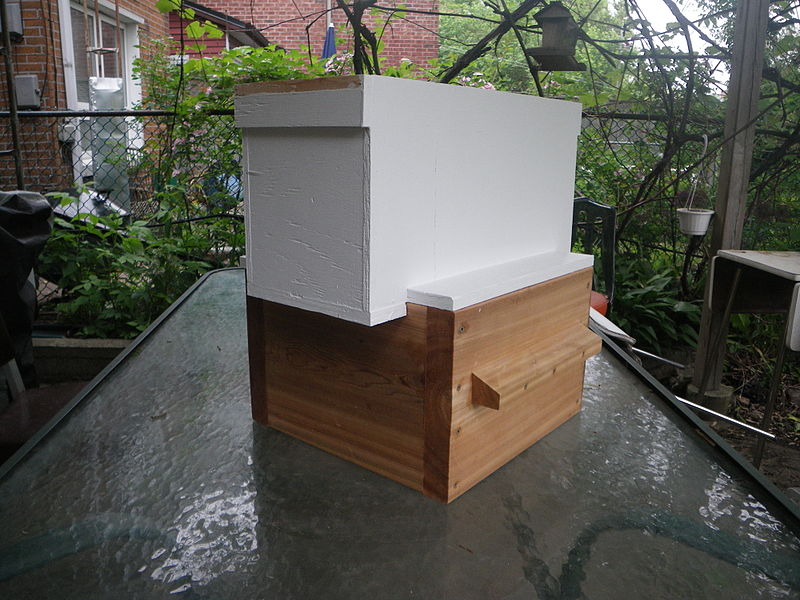
And then there is thinking inside of the box. Only a quarter of a million search results. Thinking inside the box is at least comprehensible, there is a box with information, tools, a discipline, whatever and you think within its confines. Say it’s chemistry. If the experiment doesn’t work with nickel, you can always try chromium. Thinking inside the box is good for many people, some of them engineers, but it makes me feel claustrophobic.

.
And then there is thinking between boxes. If you search the expression, you get less than sixty results, and one of them is my own. So I’m either very intrepid. Or foolhardy.
We start categorizing things as babies. A tot might refer to a bottle cap as a “door”. After all it does open and close things, doesn’t it. We correct the tot, and that’s that. There’s a lot of categorizing to do. That thing on the left is a lion. Perhaps a hungry lion. We put that into the category of lethally dangerous animals. And on the right that is a tree. When you encounter a hungry lion on the way home, you look for a tree and climb it quickly. And not the other way round. You don’t want to run away from a tree and climb a hungry lion.
And then we go to kindergarten and school where we become great dichotomizers. Something is either right or wrong. Wrong, you stay after class and do the test again. You are either right handed, or incorrigibly sinister.
You are either Jewish or non-, and if you are Jewish, you either keep kosher, or you partake of lobster soup. You are male or female, you like also sax or tenor, prefer either John or Paul (provided you’re a Beatles fan), you’re either sane or meshuga, you study history and geography as two separate classes, and you major in arts or science. There is black and there is white, fiction and non-fiction, and the humerus and the Sirius. If you believe in Peter Pan, then Captain Hooks looks like the guy on the right or the guy on the left. Does eat oats, and mares eat oats, and little lambs eat ivy. And, of course no one in their right mind would tell you that 4 and 11 are the same. We learn to put things into one category or another, dichotomous thinking. The thing about dichotomy is that you either know what it is, or you don’t. And that’s what it is.
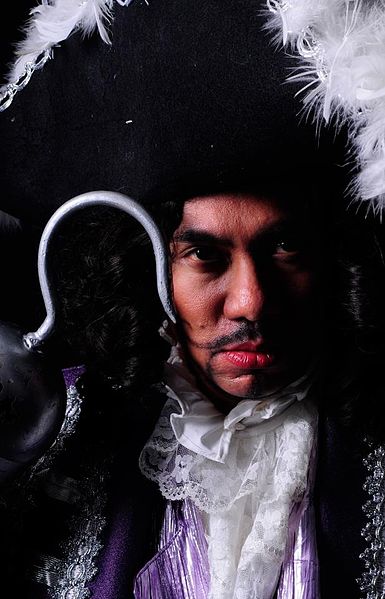
As you may have figured out already, I am not a big believer in dichotomy. I’m more into ‘almostchotomy’
After all, the interesting things in life are not dichotomous. They are almostchotomous.
But for the sake of argument, I will argue that practically nothing is dichotomous, that excluviely relegating something to one box or another is ridiculous, and boring. You CAN do things for fun AND profit (I do), between black and white there are many shades of grey (so I’ve heard), for people who can’t decide between tenor and alto sax there is the ‘C melody’ sax, geography and history should be taught together, and of course you can keep kosher all week long, but on the weekend order Chinese food on disposable plates. And, as any mathematician will tell you, 4 in base three is indeed eleven (one, two, ten, eleven).
Finally, the adult and the child can coexist. In fact, some experts think that the most important two boxes to think between are the creative, curious, observant child within you who doesn’t mind failing and appearing silly, a child with flexible boundaries who asks outlandish questions, and, in apposition, the wisdom of the adult who knows how to pay attention, to overcome cynicism, to come up with an answer to the wacky question, an experiment to answer the strange hypothesis, a solution to the weird idea. Everything I do as a scientist and writer is a dialogue between my inner child and my sort of grown up self.
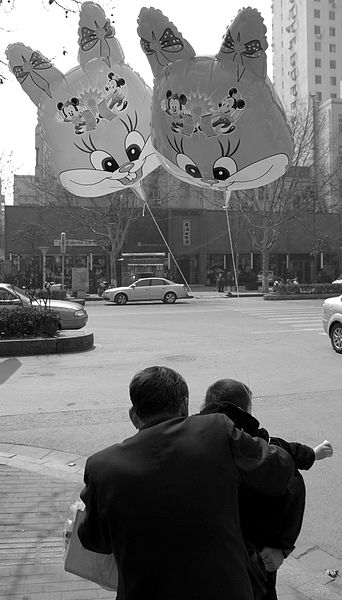
When you think about it, everything can be connected to everything. Let’s put this to the test. I’m a microbiologist, so I love the notion that eating billions of live bacteria may be good for you. So, if yogurt is one box, can we find anything under the sun that ISN’T related to yogurt?
Well I asked some creative types last week, and one answered ‘the moon’.
But there are many commonalities. Both are white, opaque, there may be bacteria on the moon. Have you ever tasted moon flavored yogurt? I hear it’s out of this world. You can send yogurt into orbit, or feed it to an astronaut.
Besides that, everyone knows that the moon is made of a related milk product, and that mice nibble away at it.
So let’s try yogurt and mice. Again we are thwarted. Research on mice shows that when males eat yogurt they become, err, more virile. And I have written a book explaining that the hero becomes an avid yogurt eater because he needs the empty cups to store all the talented mice that come to visit him each night.
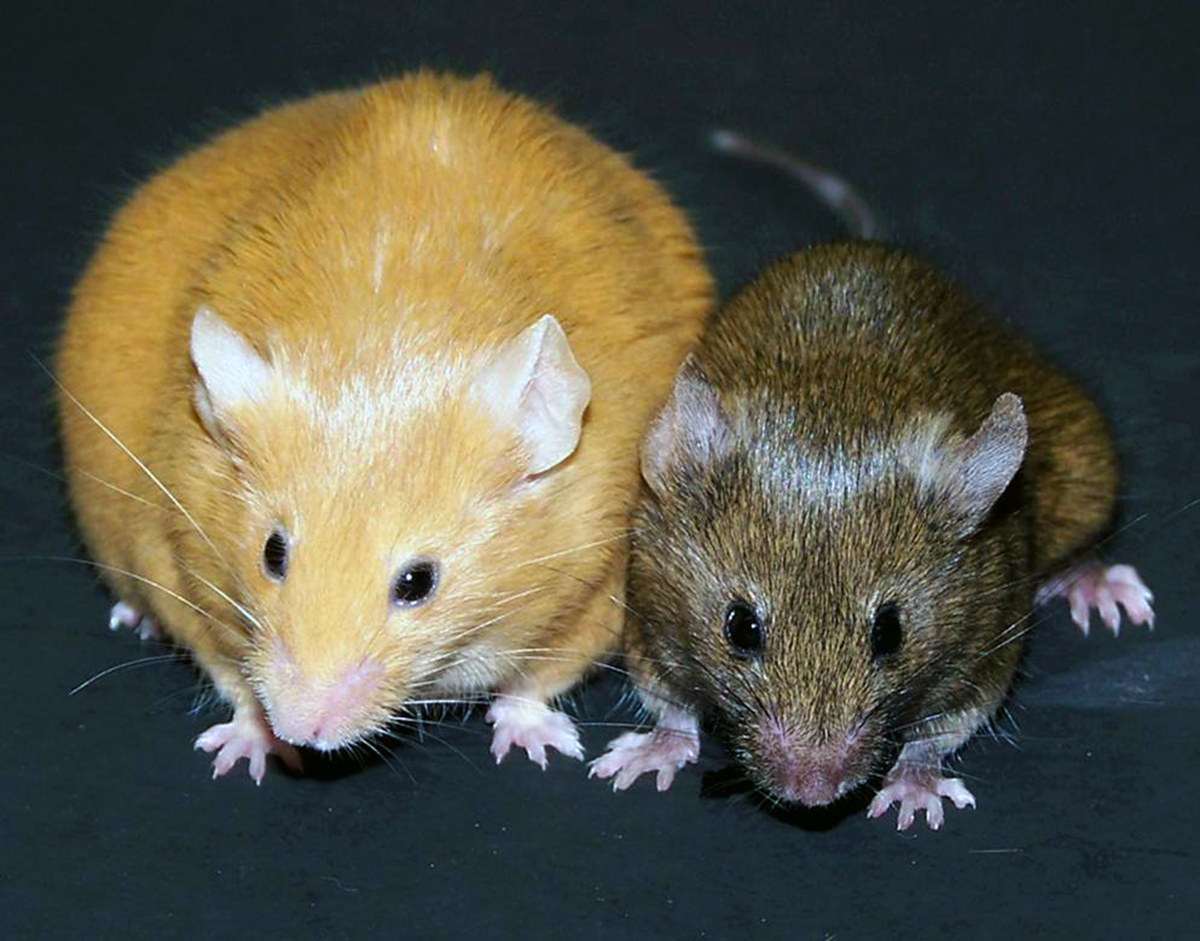
Well then, somebody suggested ‘wound care’. Again, tons of search results. So finally, I wanted to put an end to this. “Surely”, I told myself, there is no relation between binoculars and yogurt. But alas, there is. Turns out you can make a binocular out of a used yogurt cup.
If you want to try your hand at thinking between boxes, I suggest you start out with this fun and challenging game – inventing new words by combining two existing ones. Lewis Carroll did it in Jaberwocky, and now some of the words he invented are part of the English language, and you can use them in Scrabble, which he kind of pre-invented. But you can do what Lewis couldn’t – you can type your new word somewhere accessible on the net and then search to see see whether you are the first to use it. For example, you could combine an icicle and a sanatorium, both words we use in everyday conversations. When you combine them, you get icicutorium, a place you go to recover from a bout of dampinaria.
So, be sure to think between boxes. That is where the treasure of human creativity lies hidden.
Thank you for reading my book!
If you like it, you might also want to read:
Mel’s Ten Tips on Creative Thinking (with Dr. Alon Amit and Hagai Cohen)
Here you can read more about me and see ALL my books on Ourboox (I have many)
Or even better, create a book of your own!!!
Here is a tutorial to help you get started on your own voyage as an Ourboox contributor!!
And finally, you can always write me at [email protected]
Published: May 4, 2015
Latest Revision: Dec 24, 2015
Ourboox Unique Identifier: OB-48084
Copyright © 2015








